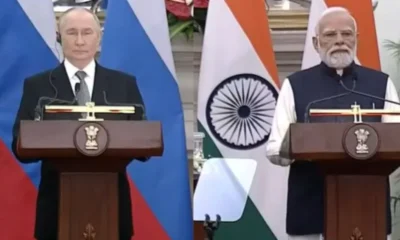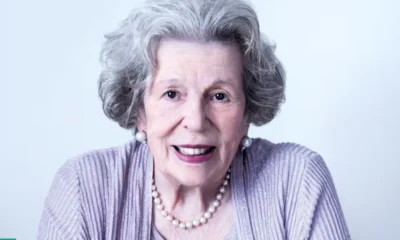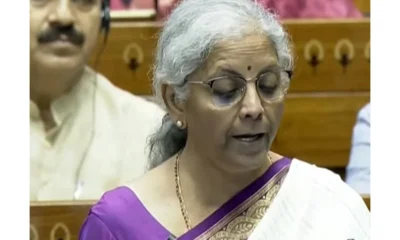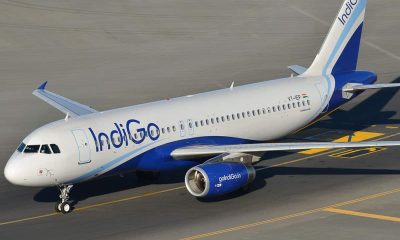The party is attempting to repeat the 2014 Lok Sabha strategy in this state but the going will be tough
By Mantosh Sharma
UP elections, due next year, have become a cauldron of caste, religion and development. Over the years, the political system in this state has flirted between exclusiveness and inclusiveness of social groups.
If one were to see the BJP team which has been working silently behind the scenes for the 2017 UP assembly election, it is more like the 2014 Lok Sabha team of Shiv Prakash, National Joint Secretary (who worked hard in western UP), Sunil Bansal (from Rajasthan and state unit general secretary who helped run a war room in Lucknow for 2014) and Keshav Maurya, (state BJP president). The team also includes Om Mathur, party strategist and national vice-president in charge of UP who is a close confidant of Amit Shah, the BJP president.
The BJP is in no mood to bring in outside elements for now. In Saharanpur, Prime Minister Narendra Modi said: “In our country, there’s a fashion that every scheme be linked to caste, religion, but for me the entire nation is my family.” And you can be sure he will be messaging and campaigning in UP too.
In the current environment, the BJP will face challenges in mobilizing its core votes and simultaneously attracting new ones. Here are some of the challenges it will face in UP in the run-up to the 2017 elections:
*Dependence on social engineering and charisma of national leadership
The drubbing of the BJP during the Bihar assembly election last year has shown the ineffectiveness of social engineering when political strategy is solely based on the opportunism of participants. It was a false assumption that Jitan Ram Manjhi, ex-CM of Bihar, Upendra Kushwaha, OBC leader of RLSP and MP from Bihar, and Ram Vilas Paswan, MP and Dalit leader will be able to bring the Dalits and OBCs together into a coalition. It appears that the BJP has started a similar engineering for UP. In a new ministry expansion in UP, a Dalit and a Brahmin minister were inducted, though none of them were mass leaders. Most of them made it to parliament due to the Modi wave in 2014.
In the absence of local mass leaders, the BJP will depend on the central leadership. Modi and Rajnath Singh, the Union home minister, will end up being star campaigners for the state election. However, both are at the receiving end due to national issues. Will they be able to bring in new voters or stop desertion to other parties?
This limitation will push the BJP towards social engineering. But then, that is not their forte. Mishandling Hyderabad student Rohith Vemula’s death early this year is a prime example of their ineptness when it comes to caste-based identity politics. Other parties such as the BSP and the SP have played caste-based identity politics in a more efficient way at the local level. On top of that, though Amit Shah is busy making coalitions with smaller parties and caste groups, their vote-bank commitment to BJP is questionable. There is a potential that the party will antagonize upper castes. Jats in western UP are already feeling uncomfortable with the BJP due to Haryana’s politics.
*Systematic effort to lure Brahmin Votes
The appointment of former Delhi CM Sheila Dixit as a potential CM candidate of the Congress Party has thrown the BJP strategy in a quandary. The immediate impact of Congress maneuver was seen in the BJP strategy when another Brahmin, Kalraj Mishra despite being a septuagenarian was allowed to continue as cabinet minister. The BJP, fearful of antagonizing the Brahmin community, which has been voting in last two decades for the BJP, didn’t dare to touch him. Shiv Pratap Shukla was accommodated as a Rajya Sabha MP despite opposition from Yogi Adityanath, MP and prominent leader from Gorakhpur region. Mahendra Pandey, MP from Chandauli near Varanasi was accommodated in the central ministry to fortify “Kashi Prant” from a Brahmin exodus.
Until recently, the BJP was fairly confident of getting the majority of Brahmin votes, which constitute 10-12 percent of the electorate. However, the narrative has changed recently. Brahmins are debating the plausibility of their political return in the state on their own terms. It is too early to say whether the new Congress leaders will be able to get a majority of Brahmins to come to them. Any shift in this base will harm the BJP immensely in UP.
*Antagonizing party-hoppers and seniors
The BJP’s strategy of accommodating opponents and promoting young and new faces is also creating issues. In the 2014 Lok Sabha polls, the BJP assimilated many party hoppers and they were promised many things. For example in Kashi Prant, Avdesh Singh, a Congress leader, Dayashankar Mishra aka Dayalu Guru, a local Congress leader who fought the Varanasi South seat and Sushil Singh, an independent MLA from Sakaldiha, joined the BJP in the 2014 election. However, in an assembly election, the BJP will have a hard time placating hoppers without antagonizing existing leaders and cadres in respective constituencies. Dayalu Guru will be seeking a seat, Varanasi South, from where Shayamdev Rai Chaudhary won seven times. Similar challenges are there in many constituencies.
There are all indications that the BJP will be focusing on a new, young and energetic leadership. Instead of relying on the existing leadership such as Vinay Katiyar, MP and founder of Bajrang Dal, Premlatata Katiyar, ex-BJP vice-president and prominent cabinet minister during the Kalyan Singh era and Omprakash Singh, MLA and ex-minister, the BJP has chosen to bring in the young Anupriya Patel as the Kurmi face of the party. This is creating heartburn within the party. Though it may not burst out as outright rebelliousness, it has the potential to take the sheen out of the campaign.
*Booth management and coordination
In 2014, there was talk that Amit Shah has implemented the Gujarat model of election campaigning during the Lok Sabha election. Each area booth was under a “booth prabhari” who monitored a few booths, and for every 60 voters, one “Panna Prabhari” was deputed. The RSS too helped silently, building narratives on border issues, minority appeasement, national issues and weak leadership of the ruling dispensation.
This strategy was copied and successfully emulated in Delhi by the AAP. It managed voters through mohalla sabhas and was so successful that it won 67 out of 70 seats in Delhi. Similarly, the Congress is emulating this in the 2017 UP election through Prashant Kishore’s recommendation. He is a successful political strategist instrumental in the 2014 success of the BJP and the 2015 Nitish Kumar election. The BSP and the SP too have become sophisticated over time in managing booths through their cadres. But BJP’s advantage of efficiently managing booths and voters has eroded since 2014.
*Reconciling aspiration politics with failed expectations
This is biggest stumbling block for the BJP in UP. It will be extremely hard for it to keep a similar tempo of campaigning as in 2014 as there is nothing tangible to show on the ground. People are affected mostly through day to day public services such as health, law and order and education, which are state concerns.
Secondly, its nearly 70 MPs are at the mercy of the local administration to get work done for their constituents, many of whom are raising concerns of ineffective leadership. The fallout of this was seen when Bharat Singh, MP from Balia, had an outburst in front of Modi in a 2015 parliamentary meet when he said that ministers do not respond to letters and at times, several months go by before they respond.
“Swachh Bharat” too hasn’t reached the grassroots in a meaningful way. Varanasi, Modi’s constituency, is in dire need of cleanliness, sanitation and safe drinking water. “Jiyapur”, an adopted village of the PM in Varanasi, is more a testimony of failure than success.
It is obvious that the 2017 assembly polls in UP have to be fought differently from the 2014 Lok Sabha polls.


 Entertainment14 hours ago
Entertainment14 hours ago
 India News19 hours ago
India News19 hours ago
 India News14 hours ago
India News14 hours ago
 India News19 hours ago
India News19 hours ago
 Latest world news19 hours ago
Latest world news19 hours ago
 India News8 hours ago
India News8 hours ago
 India News8 hours ago
India News8 hours ago
 India News9 hours ago
India News9 hours ago



